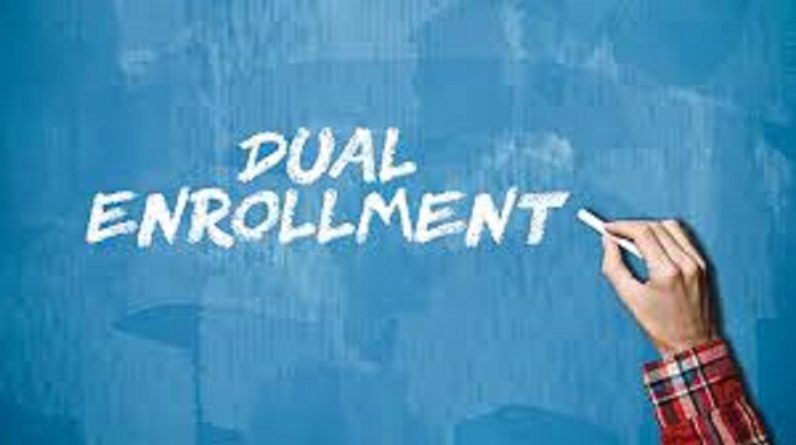
Benefits of Dual Enrollment: Starting Your College Journey Early
In today’s competitive academic landscape, students are continually seeking ways to enhance their educational experiences and career prospects. One increasingly popular strategy is dual enrollment, a program that allows high school students to take college courses for credit. This approach offers numerous benefits that can significantly impact a student’s academic and professional future. Below, we delve into the myriad advantages of dual enrollment and why it might be the right choice for ambitious students.
What is Dual Enrollment?
Dual enrollment enables high school students to enroll in college-level courses, earning credits that apply to both their high school diploma and their future college degree. These courses can be taken at a community college, a university, or even online, providing flexibility and accessibility for students from various backgrounds.
Academic Benefits
Advanced Learning Opportunities
Dual enrollment offers advanced learning opportunities that go beyond the typical high school curriculum. Students can engage in more challenging coursework, which can better prepare them for the rigors of college academics. This experience helps in developing critical thinking, problem-solving, and analytical skills that are crucial for higher education.
Improved College Readiness
Participating in dual enrollment programs significantly improves college readiness. Students get a firsthand experience of what college courses entail, including the level of commitment and effort required. This early exposure helps in easing the transition from high school to college, making students more confident and better prepared to handle college-level work.
Enhanced Academic Performance
Studies have shown that students who participate in dual enrollment tend to have enhanced academic performance in their subsequent college years. The familiarity with college coursework and the expectations of college professors contribute to better grades and a more comprehensive understanding of subjects.
Financial Benefits
Cost Savings
One of the most compelling benefits of dual enrollment is the potential for cost savings. College courses taken during high school often come at a reduced cost or are fully funded by the school district. This can lead to significant savings on tuition, fees, and other college expenses, reducing the overall financial burden of higher education.
Reduced Time to Degree
By earning college credits while still in high school, students can potentially reduce the time it takes to complete their degree. This acceleration can lead to entering the workforce sooner and incurring less student debt, providing a financial advantage that can set students ahead of their peers.
Personal Development Benefits
Increased Motivation and Engagement
Dual enrollment can lead to increased motivation and engagement in students. The challenge and stimulation of college courses can reignite a passion for learning and encourage students to strive for academic excellence. This heightened motivation often translates to better performance in both high school and college.
Enhanced Responsibility and Time Management
Taking on college coursework while in high school requires students to develop enhanced responsibility and time management skills. Balancing the demands of dual enrollment with regular high school responsibilities teaches students how to manage their time effectively, prioritize tasks, and meet deadlines—all essential skills for academic and professional success.
Broader Perspective
Exposure to college courses provides students with a broader perspective on education and their future career paths. They have the opportunity to explore various fields of study, which can help in making more informed decisions about their major and career goals. This exploration is invaluable in guiding students toward their true interests and strengths.
Career Benefits
Competitive Edge in College Admissions
Participation in dual enrollment programs gives students a competitive edge in college admissions. Admissions committees view dual enrollment as a testament to a student’s ability to succeed in rigorous academic environments. This can significantly enhance a student’s application, making them stand out among other applicants.
Improved Job Prospects
Students who have completed dual enrollment courses often have improved job prospects. The advanced skills and knowledge gained through these courses make them more attractive to potential employers. Additionally, the experience of managing college-level work while in high school demonstrates a strong work ethic and the ability to handle responsibility, qualities that are highly valued in the workforce.
Networking Opportunities
Dual enrollment also provides students with valuable networking opportunities. By interacting with college professors and peers, students can begin to build a network of contacts that can be beneficial for future academic and career endeavors. These connections can lead to mentorship opportunities, internships, and even job offers down the line.
Conclusion
Dual enrollment is a powerful tool that offers a multitude of benefits for high school students. From academic advancement and financial savings to personal development and career readiness, the advantages are clear. By starting their college journey early, students can gain a significant head start on their peers, setting the stage for a successful academic and professional future.

Hi, I am John Smit a Captain in Fire Department City of Newyork with over years of experience in the field of Firefighting and HSE. My passion for fire safety started when I was a young boy and witnessed a neighbor’s house go up in flames along with precious lives. Since then, I had dedicated my life to ensuring the safety of buildings, properties, and individuals in case of a fire and medical emergencies.



